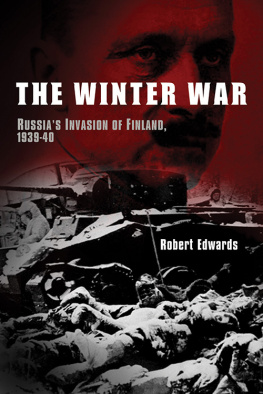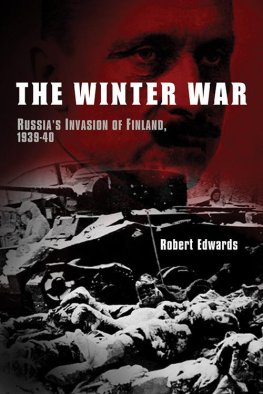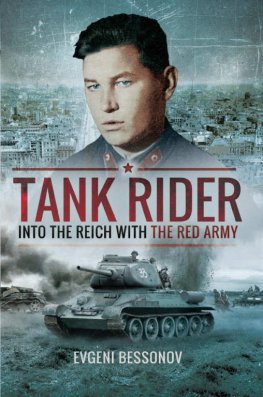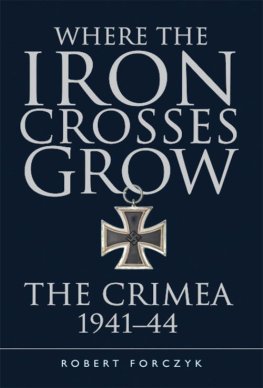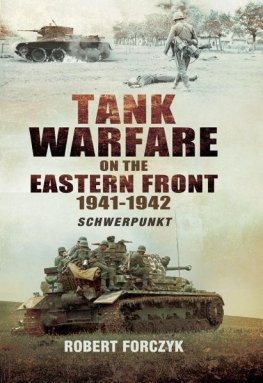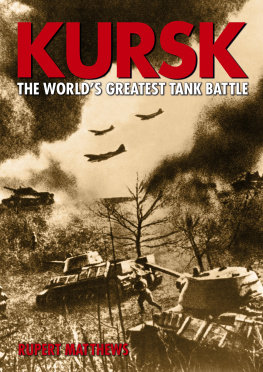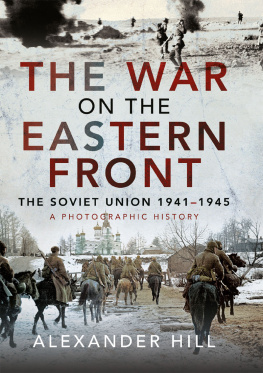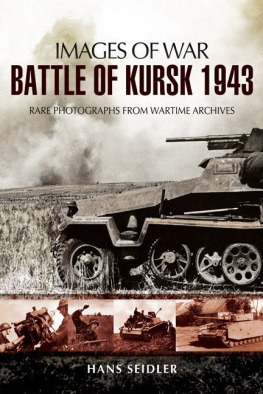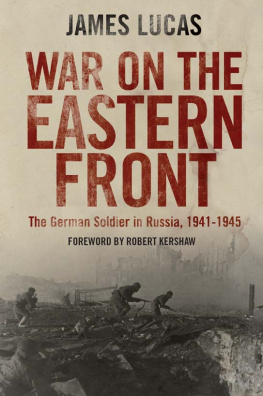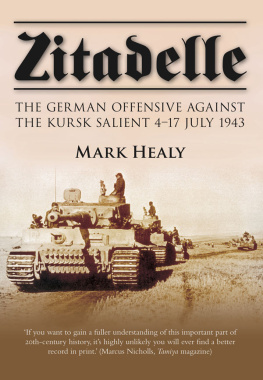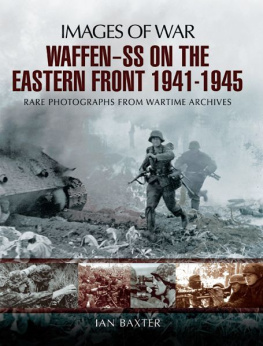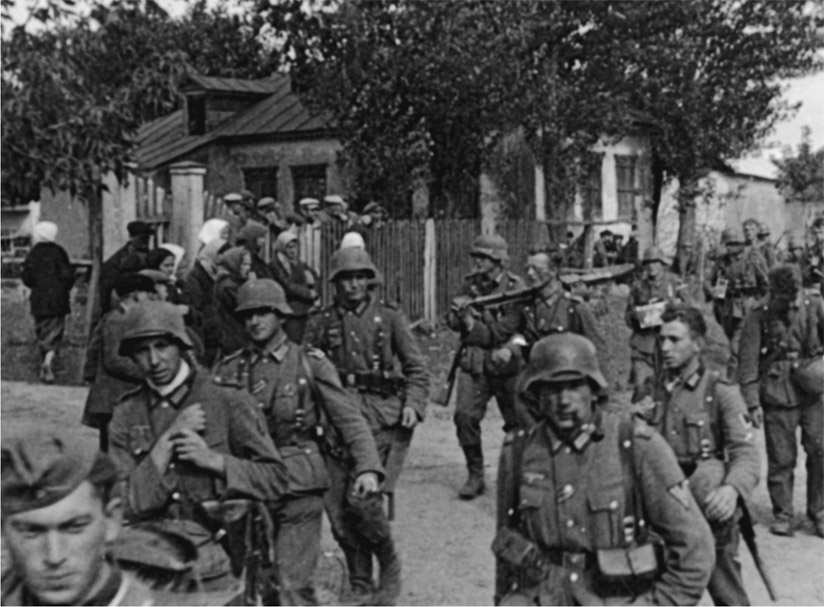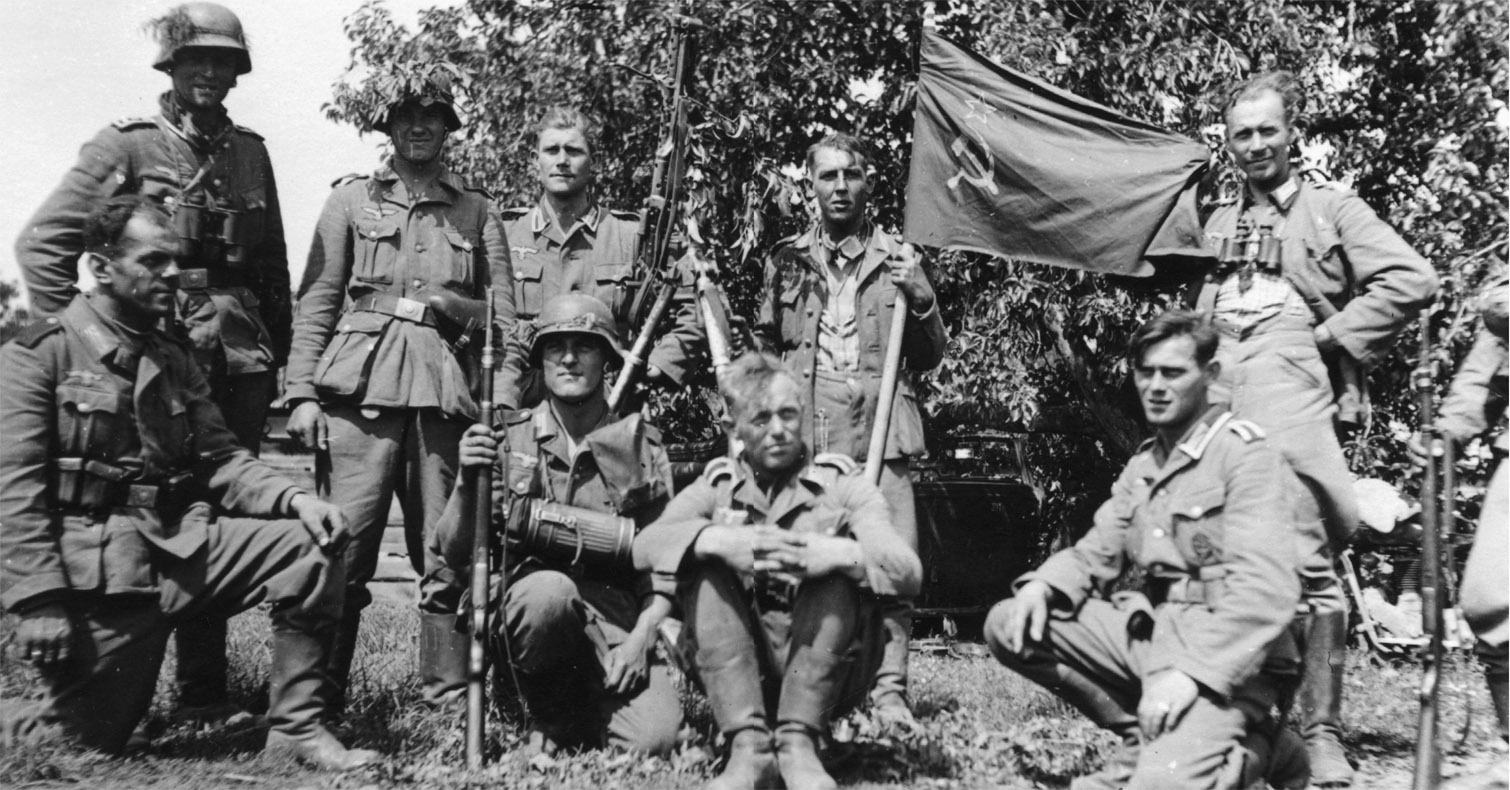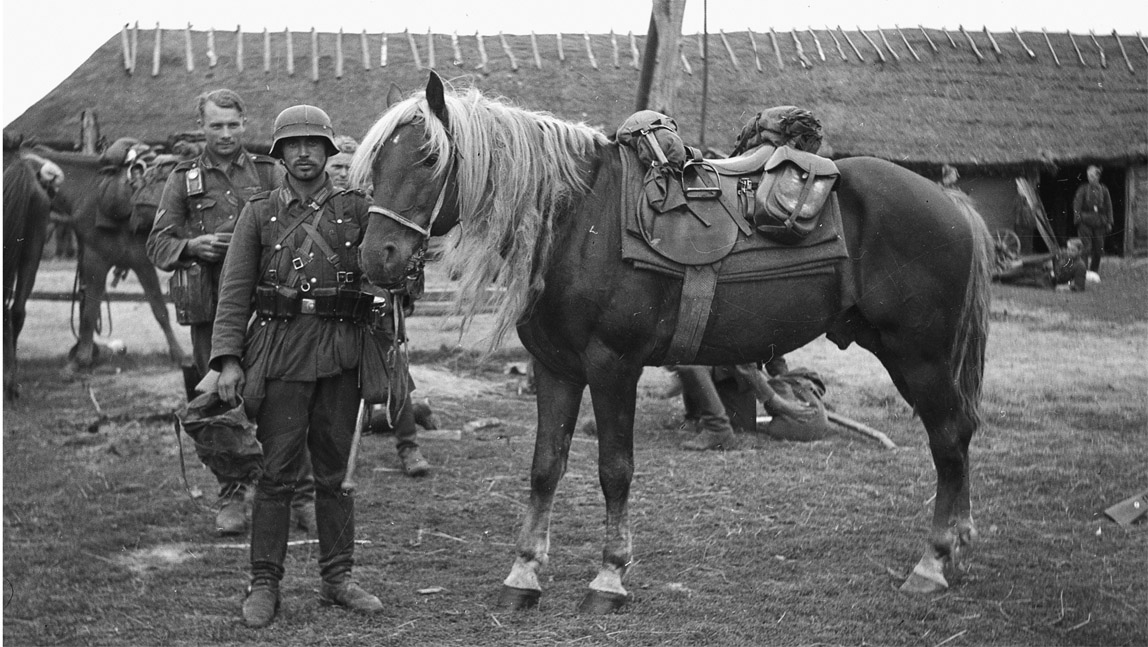PHASE 1 GERMAN DOMINANCE
F eeling confident in the abilities of his armed forces after a string of unprecedented victories, Hitler formally announced his intent to invade the Soviet Union in December 1940 with a planning date of May 1941 for the start of Operation Barbarossa, the code name for the offensive. In doing so, he violated his own principles in not allowing Germany to be involved in a two-front war. Nevertheless, he sensed weakness on the part of the Western Allies and perceived no immediate threat emanating from there. He also felt that the Soviet Union would topple like a house of cards and he could take a calculated risk, even though the two socialist powers had signed a non-aggression treaty, which had been scrupulously upheld by the Soviets. For Hitler, it was intended to be a campaign that would cause the world to hold its breath.
After a delay at least partially caused by the fighting in the Balkans, In round numbers, the German forces totaled approximately 3,050,000 men in 207 infantry divisions, of which 13 were motorized, and three brigades. In addition, there were 3,350 armored fighting vehicles of all types, mostly concentrated in the 17 armored (Panzer) divisions. The German Air Force (Luftwaffe) supported the ground operations with approximately 4,000 aircraft, to include liaison and transport assets, but only 3,000 of its aircraft were reported as being operational. The ground forces were assigned to three field-army groups, North, Center, and South, which had general geographic objectives of Leningrad, Moscow, and the fertile farmlands of the Ukraine.
Events before Barbarossa |
MaySept 1939 | Soviet Union fights Japan at Khalkhyn Gol |
| Aug 23, 1939 | NaziSoviet Pact signed |
| Sept 1, 1939 | Germany invades Poland |
| Sept 17, 1939 | Soviet Union invades Poland |
| Oct 1939 | Germans establish first Jewish ghetto in Poland |
| Nov 30, 1939 | Soviet Union invades Finland (Winter War) |
| April 9, 1940 | Germany invades Norway, Denmark |
| AprilMay 1940 | Soviets execute more than 20,000 Poles in Katyn Massacre |
| May 10, 1940 | Germany invades France, Belgium, the Netherlands, Luxembourg |
| June 1940 | Soviet Union invades Lithuania, Estonia, Latvia |
| July 10, 1940 | Germany begins Battle of Britain |
| Sept 27, 1940 | Tripartite Pact signed by Germany, Italy, Japan |
| April 6, 1941 | Germany invades Yugoslavia, Greece |
| April 13, 1941 | SovietJapanese Neutrality Pact signed |
June 22, 1941 | Germany invades Soviet Union |
Facing the Germans and their allies were 3,000,000 Soviet troops in the front line with another 1,000,000 in reserve. In terms of armor, the Germans faced some 22,500 tanks and almost 5,000 armored cars, more than twice armor strategist and tactician General Heinz Guderianss prewar estimate of 10,000, which was considered a substantial exaggeration at the time. Impressive though these figures were, only 970 of the vehicles were the revolutionary T-34 medium tank, armed with a 76.2mm main gun, which far out-classed anything the Germans then fielded.
German infantry on the march.
T he war against the Soviet Union will be such that it cannot be conducted in a knightly fashion. The struggle is one of ideologies and racial differences and will have to be conducted with unprecedented, unmerciful, and unrelenting harshness.
Hitler, March 1941
German soldiers pose with a Soviet flag.
The idea was to conduct a war of maneuver along the entire front, with the focal point (Schwerpunkt) of the offensive in the center under the overall command of Army Group Center (Heeresgruppe Mitte). Germanys forces were able to make significant gains from the onset of the offensive, partly due to the ill-advised forward positioning of the majority of the Red Armys combat forces, a move that has caused some historians to question whether Stalin was planning his own attack against Germany and her allies. Regardless, that disposition of forces, coupled with the virtually complete surprise that was achieved when the attack was launched, the destruction of much of the Red Air Forces tactical fleet on the ground, and the slow and inept response starting with the commanders in the field and moving up the chain-of-command, led to unprecedented ground gains and a relatively quick breaching of the frontier defenses and then the Stalin Line.
Unlike the French campaign, where there was a clear strategic objective to drive to the Channel and isolate the French and British armies in Belgium, the field army groups were sent in three directions with the overall strategic goal being contentious, with one camp arguing for the elimination of the Soviet forces in the field and the other camp arguing for decapitating the leadership centers of the Soviet Union, primarily Leningrad and Moscow. As a result of the main effort eventually being focused on destroying the Red Army, particularly since the drive in the south was being slowed considerably by stubborn Soviet resistance, the drive on Moscow was delayed by more than a month.
Contrary to the myth of blitzkrieg and its mechanized juggernaut, the German war machine relied on horses until the end of the war.
Forces were diverted to contain and eliminate huge pockets of Soviet forces through the use of gigantic pincers movements conducted by Army Groups Center and South. At Kiev, four Soviet field armies and parts of a fifthsome forty-three divisionswere trapped. The Germans claimed 652,000 prisoners and the Soviets themselves admitted to 616,000 casualties. However, valuable time was lost, allowing the Soviet forces to reconstitute with astonishing rapidity. On the German side, casualties continued to mount and, by late August, the Eastern Front was short 200,000 troops and most panzer divisions were down to 20%30% of their initial tank strength.
The diversions of the summer deprived the Germans of the opportunity to take Moscow before the onset of winter weather, which proved to be the unhinging of the campaign in 1941. In early October, the autumn rains commencedthe start of the soon-to-be-dreaded Rasputitsa mud seasonturning the already terrible roads into almost impassable quagmires that were difficult to negotiate even by tracked vehicles. The already inadequate German motor transport, consisting of far too many types, including a significant number of captured vehicles, could not cope with the conditions. Supplies to the attacking divisions were severely curtailed, with less than half of the required tonnage being delivered.
1941 on the Eastern Front |
June 22 | Germany invades Soviet Union |
| July 831 | Battle of Smolensk |
| Aug 23Sept 26 | Battle of Kiev |
| Sept 8 | Siege of Leningrad begins |


